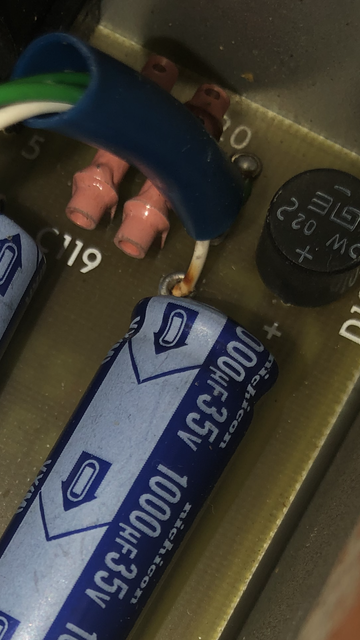kasperhauser
pfm Member
As stated. Plug it in, nothing happens, not even momentarily. Fuse is good.
I saw an old thread here that suggested caps and rectifier diode are likely suspects. I see three Nichicon caps and they all look outwardly fine.
Suggestions? “Send it to Quad” is already in play, but I’m hoping to rule out at least a few simple options that don’t involve a 10,000 mile round trip.
I saw an old thread here that suggested caps and rectifier diode are likely suspects. I see three Nichicon caps and they all look outwardly fine.
Suggestions? “Send it to Quad” is already in play, but I’m hoping to rule out at least a few simple options that don’t involve a 10,000 mile round trip.



